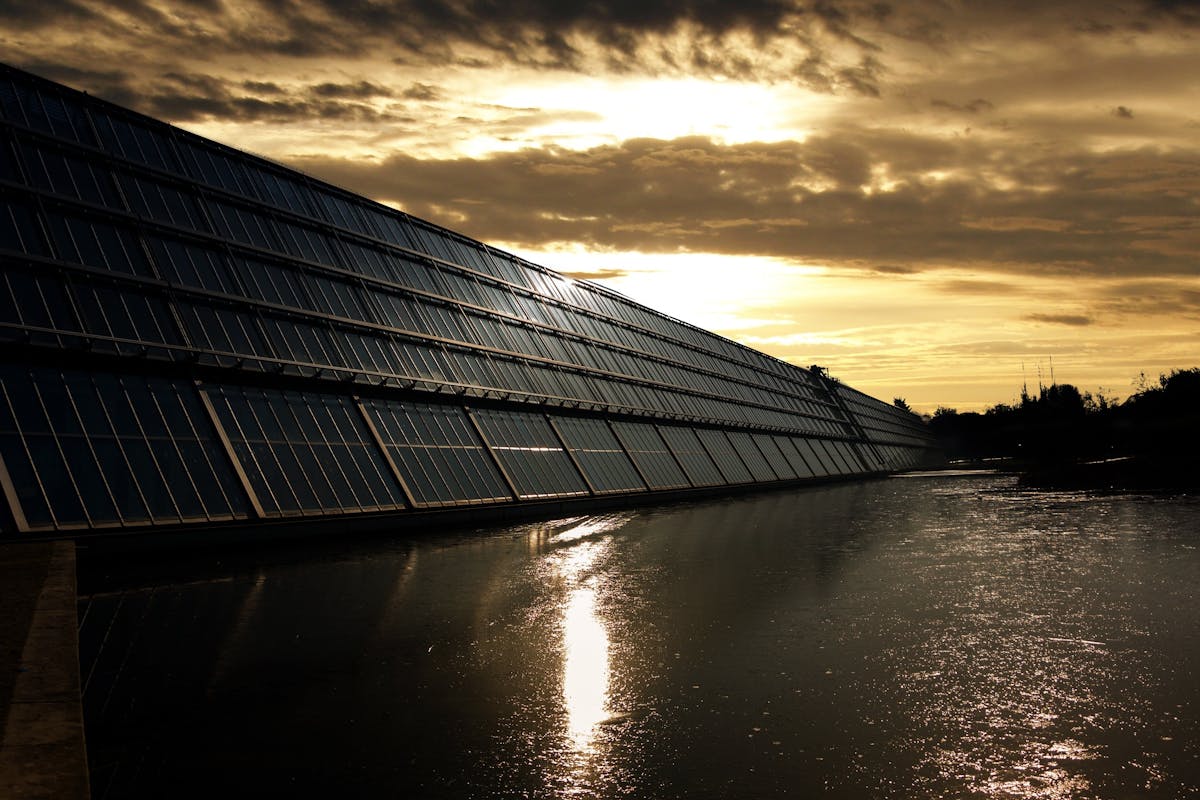Business
Kinetic Solar Asphalt Roof Flashing

Introduction to Kinetic Solar Technology
Kinetic Solar technology is revolutionizing how we harness energy from the sun. This innovative approach combines solar power with kinetic energy, enhancing the efficiency of energy systems. By integrating kinetic principles, solar energy can be captured more effectively. Kinetic solar asphalt roof flashing technology is especially beneficial in residential roofing applications, where every bit of energy counts.
What is Kinetic Solar Technology?
Kinetic solar technology involves systems that convert both solar and kinetic energy into usable power. These systems use movement to generate energy, often incorporating features like solar panels that can move or tilt. The result is a more dynamic and responsive energy solution, especially effective in areas with variable sunlight.
Benefits of Kinetic Solar Systems
- Increased Efficiency: Kinetic solar systems capture more energy, making them more efficient than traditional static solar panels.
- Versatile Applications: They can be used in various settings, including homes, commercial buildings, and remote locations.
- Sustainability: By combining two renewable energy sources, these systems promote sustainable practices.
Understanding Asphalt Roof Flashing
Asphalt roof flashing plays a critical role in protecting your roof from water damage. Flashing is typically made from materials like metal or asphalt and is installed in areas where the roof intersects with walls, chimneys, or other structures.
What is Roof Flashing?
Roof flashing is a thin material that directs water away from critical areas of the roof. It prevents leaks and enhances the longevity of the roofing system. Proper installation is essential to ensure its effectiveness.
Types of Asphalt Roof Flashing
Several types of flashing are commonly used, including:
- Base flashing: Installed at the base of walls.
- Counter flashing: Installed on top of base flashing for additional protection.
- Step flashing: Used where the roof meets a vertical surface.
| Flashing Type | Description | Use Case |
|---|---|---|
| Base Flashing | Installed at the base of walls | Wall-to-roof transitions |
| Counter Flashing | Installed above base flashing | Vertical structures |
| Step Flashing | Installed in steps along slopes | Roofs with vertical walls |
Integrating Solar Energy Solutions
Integrating solar energy into roofing systems enhances their value. Kinetic solar asphalt roof flashing allows for seamless incorporation of solar technology with traditional roofing materials.
Benefits of Solar Roof Flashing
Solar roof flashing provides multiple advantages, including:
- Energy Generation: Captures solar energy directly on the roof.
- Improved Aesthetics: Modern designs integrate well with various roofing styles.
- Durability: Enhanced materials resist weathering and wear.
Kinetic Energy and Solar Panel Integration
Combining kinetic energy with solar panels allows for more flexible energy production. For instance, roof panels can adjust their angle based on sunlight, optimizing energy capture throughout the day.
Installation of Kinetic Solar Asphalt Roof Flashing
Installing kinetic solar asphalt roof flashing involves several key steps. Proper installation ensures longevity and performance.
Roof Flashing Installation Process
- Preparation: Assess the roof for any necessary repairs.
- Measurement: Measure the areas where flashing will be installed.
- Cutting Materials: Cut the flashing to fit.
- Installation: Secure the flashing using appropriate fasteners.
- Sealing: Apply sealant to prevent leaks.
Tools and Materials Needed
The following tools and materials are essential for installation:
- Measuring tape: For accurate measurements.
- Utility knife: For cutting materials.
- Sealant: To ensure watertight seals.
- Fasteners: To secure the flashing.
Maintenance Tips for Solar Roofs
Maintaining your solar roof is crucial for maximizing its lifespan and efficiency.
Regular Roof Maintenance
Perform regular inspections to check for signs of damage. Look for missing shingles, loose flashing, or any signs of wear. Cleaning gutters and removing debris from the roof can also prevent water buildup.
Weatherproofing and Sealing Techniques
Using high-quality sealants can enhance the roof’s resistance to water. Regularly inspect and reapply sealants as needed. This simple maintenance task can significantly extend the life of your roof.
Comparing Flashing Materials
Choosing the right flashing material is essential for optimal performance.
Types of Flashing Materials
Common flashing materials include:
- Aluminum: Lightweight and resistant to corrosion.
- Copper: Long-lasting and aesthetically pleasing but more expensive.
- Vinyl: Cost-effective and easy to work with but less durable.
Performance and Durability
When selecting materials, consider their durability and resistance to weather. Aluminum is popular for its lightweight properties, while copper is favored for its longevity. Each material has its pros and cons, depending on your specific needs.
Energy Efficiency and Cost Savings
Kinetic solar asphalt roof flashing can lead to significant energy savings.
How Kinetic Solar Flashing Saves Energy
By integrating kinetic principles, these systems can harness energy more effectively. This translates to lower energy bills and a reduced carbon footprint.
Long-Term Financial Benefits
Investing in kinetic solar technology can yield substantial returns. With tax incentives and energy savings, homeowners can recoup their initial investments over time.
Conclusion
Kinetic solar asphalt roof flashing represents a significant advancement in roofing technology. By combining solar energy and kinetic principles, these systems offer enhanced efficiency, sustainability, and durability. As we move toward a greener future, embracing these innovative solutions will be crucial.
Frequently Asked Questions
1. What is kinetic solar technology?
Kinetic solar technology harnesses both solar and kinetic energy for efficient energy production.
2. How does asphalt roof flashing work?
Flashing directs water away from vulnerable areas on the roof to prevent leaks and damage.
3. What are the benefits of kinetic solar asphalt roof flashing?
They offer improved energy efficiency, aesthetic appeal, and enhanced durability.
4. How often should I maintain my solar roof?
Regular inspections at least twice a year are recommended, along with prompt repairs as needed.

-

 Tech2 months ago
Tech2 months agoTwastia.com: Your Go-To for Digital Solutions
-

 Delaware2 months ago
Delaware2 months agoNew Castle Beer: A Delaware Favorite and Its Rich History
-

 California2 months ago
California2 months agoCosts of Root Canal in Berkeley, Oakland, and Across California
-

 Features2 months ago
Features2 months agoCleetus McFarland Net Worth in 2024
-

 California2 months ago
California2 months agoWhere to Buy Kangertech T3S Coils in Oakland, California: Best Options
-

 Idaho2 months ago
Idaho2 months agoRake Up Boise 2024: Guide to Idaho Community Cleanup Event
-

 Texas2 months ago
Texas2 months agoDallas Cowboys Helmet: A Texas Icon and NFL Legacy
-

 Alaska2 months ago
Alaska2 months agoAre Wintergreen Plants in Alaska Edible?






